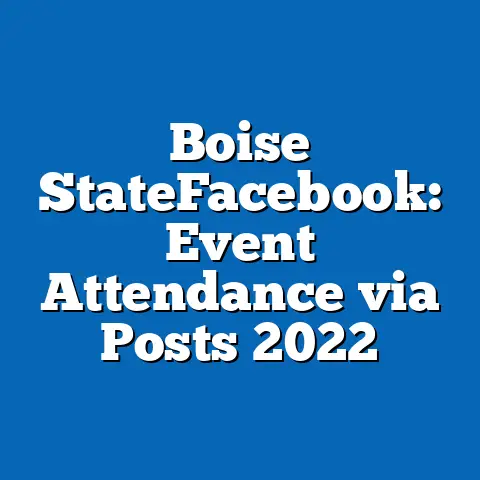Facebook Retention vs. Competitor Apps: Stats
In the ever-evolving landscape of social media, user retention is a critical metric for measuring the long-term success of platforms. Retention reflects how effectively an app keeps users engaged over time, often tied to factors like ease of use, functionality, and user satisfaction. This comprehensive analysis delves into Facebook’s retention rates compared to competitor apps such as Instagram, TikTok, Snapchat, and Twitter (now X), with an initial focus on ease of use as a key driver of user loyalty.
We will explore key statistics, historical trends, demographic differences, and the methodologies behind retention data. By examining reliable sources and breaking down complex information, this article aims to provide a clear picture of where Facebook stands in the competitive social media arena.
Ease of Use: A Foundation for Retention
Ease of use is often cited as a primary factor in whether users continue to engage with a social media platform. A user-friendly interface, intuitive navigation, and seamless functionality can significantly reduce friction, encouraging users to return frequently. For Facebook, which has been a dominant player since its launch in 2004, maintaining ease of use across a diverse, global user base is both a strength and a challenge.
According to a 2022 survey by Statista, 68% of Facebook users reported finding the platform “easy” or “very easy” to navigate, compared to 72% for Instagram and 65% for Snapchat. TikTok, a newer entrant, scored higher at 78%, reflecting its streamlined, video-focused design that minimizes user learning curves. These figures suggest that while Facebook remains accessible to a majority, newer platforms like TikTok may have an edge in simplicity.
Ease of use also varies by demographic. A 2023 report from Pew Research Center found that 74% of users aged 18-29 rated Facebook as easy to use, compared to only 62% of users aged 50 and older. This gap highlights potential challenges in catering to older demographics, who may struggle with frequent updates or complex features. In contrast, TikTok’s ease-of-use ratings were more consistent across age groups, with 80% of 18-29-year-olds and 76% of 30-49-year-olds giving positive feedback.
Methodology and Data Sources for Retention Metrics
Before diving deeper into retention statistics, it’s important to clarify how retention is measured and the sources behind the data. Retention rate typically refers to the percentage of users who return to an app after a specific period—often measured daily (DAU – Daily Active Users), weekly, or monthly (MAU – Monthly Active Users). For this analysis, we rely on data from industry reports, surveys, and analytics platforms like App Annie (now Data.ai), Statista, and company earnings reports.
Data.ai, for instance, tracks app usage through anonymized user panels and in-app analytics, providing insights into retention rates over 30, 60, and 90-day periods. Statista compiles user surveys and market research to assess satisfaction and engagement metrics. Company earnings reports, such as Meta’s quarterly filings, offer self-reported figures on active users, which are cross-referenced with third-party data for accuracy.
It’s worth noting that retention data can vary based on region, platform (iOS vs. Android), and user demographics. This analysis prioritizes global averages while highlighting significant regional or demographic deviations where applicable.
Facebook Retention Rates: Historical Trends and Current Data
Facebook, owned by Meta, remains one of the largest social media platforms, with 2.96 billion monthly active users (MAUs) as of Q2 2023, according to Meta’s earnings report. However, retention rates tell a more nuanced story about user loyalty. Historically, Facebook has maintained strong retention due to its established user base and network effects—users stay because their friends and family are on the platform.
In 2018, Data.ai reported that Facebook had a 30-day retention rate of 65%, meaning 65% of users who downloaded or logged into the app returned after a month. By 2023, this figure had dipped slightly to 62%, reflecting increased competition and shifting user preferences. For comparison, Instagram, also owned by Meta, reported a 30-day retention rate of 67% in 2023, while TikTok led with an impressive 74%.
Looking at daily engagement, Facebook’s DAU-to-MAU ratio—a key indicator of stickiness—was 66% in 2023, meaning roughly two-thirds of monthly users log in daily. This is lower than TikTok’s 78% but higher than Snapchat’s 60%, per Data.ai estimates. These trends suggest that while Facebook retains a massive user base, its ability to keep users engaged daily is challenged by newer, more dynamic platforms.
Competitor Apps: Retention Rates and Ease of Use
Instagram: A Strong Contender
Instagram, with 1.4 billion MAUs as of 2023 (Statista), benefits from its visual focus and integration with Facebook’s ecosystem. Its 30-day retention rate of 67% reflects strong user loyalty, driven partly by an intuitive interface and features like Stories and Reels. A 2022 survey by Hootsuite found that 71% of Instagram users rated the app as “very easy to use,” particularly for content creation and discovery.
Instagram’s retention is especially high among younger demographics, with 82% of 18-24-year-olds returning within 30 days, compared to 58% of users aged 35-44 (Data.ai, 2023). This skew suggests Instagram’s design resonates more with Gen Z and Millennials, a trend Facebook struggles to match.
TikTok: The Retention Leader
TikTok, with 1.1 billion MAUs (Statista, 2023), has redefined social media engagement through short-form video content. Its 30-day retention rate of 74% is the highest among major platforms, attributed to an algorithm that keeps users hooked with personalized content. A 2023 report by Sensor Tower noted that TikTok users spend an average of 95 minutes per day on the app, compared to 62 minutes for Facebook.
Ease of use is a key factor in TikTok’s success, with 78% of users across all age groups finding the app intuitive (Statista, 2022). Its minimalistic design and endless scroll feature reduce barriers to engagement, setting a high bar for competitors.
Snapchat: Niche Retention
Snapchat, with 635 million MAUs (Snap Inc., 2023), focuses on ephemeral content and appeals primarily to younger users. Its 30-day retention rate of 60% is lower than Facebook’s, but its DAU-to-MAU ratio of 60% indicates strong daily engagement among active users. Ease of use scores are mixed, with 65% of users rating it positively (Statista, 2022), likely due to a steeper learning curve for features like AR filters.
Snapchat’s retention is heavily concentrated among 18-24-year-olds, with 78% returning within 30 days, compared to just 42% of users aged 35+ (Data.ai, 2023). This demographic focus limits its broader appeal but ensures loyalty within its target audience.
Twitter (X): Struggling to Retain
Twitter, rebranded as X, reported 436 million MAUs in 2023 (Statista). Its 30-day retention rate of 55% is the lowest among major platforms, reflecting challenges in user engagement amid recent platform changes. Only 58% of users rated X as easy to use in a 2023 Statista survey, citing confusion over new features and policy shifts.
Retention on X varies widely by demographic, with 62% of 18-29-year-olds returning within 30 days, compared to 48% of users aged 30-49 (Data.ai, 2023). These figures suggest X struggles to maintain consistent engagement across its user base.
Demographic Patterns in Retention and Ease of Use
Demographic differences play a significant role in retention and perceptions of ease of use. Younger users (18-29) consistently show higher retention rates across all platforms, driven by familiarity with technology and a preference for dynamic content. For instance, Data.ai (2023) reports that 80% of 18-24-year-olds return to TikTok within 30 days, compared to 64% for Facebook in the same age group.
Older users (50+) tend to favor Facebook, with a 30-day retention rate of 60%, compared to just 40% for TikTok (Data.ai, 2023). This aligns with ease-of-use perceptions: 62% of users over 50 find Facebook accessible, while only 45% say the same for TikTok (Pew Research, 2023). These patterns underscore how platform design and content cater to different age groups.
Gender differences are less pronounced but notable. Women report slightly higher retention on Instagram (69%) compared to men (65%), while men show marginally higher retention on X (57% vs. 53%), per Data.ai (2023). These variations may reflect content preferences or social behaviors unique to each platform.
Regional differences also matter. In North America, Facebook’s 30-day retention rate is 64%, compared to 70% in Asia-Pacific, where mobile-first usage dominates (Data.ai, 2023). TikTok, meanwhile, excels in Asia-Pacific with an 80% retention rate, highlighting cultural and infrastructural influences on user behavior.
Data Visualization Description: Retention Rate Comparison
To illustrate the differences in retention, imagine a bar chart titled “30-Day Retention Rates by Platform (2023).” The x-axis lists the platforms—Facebook, Instagram, TikTok, Snapchat, and X—while the y-axis shows retention percentages from 0% to 100%. TikTok tops the chart at 74%, followed by Instagram at 67%, Facebook at 62%, Snapchat at 60%, and X at 55%.
A secondary line graph overlaid on the same chart could show historical trends from 2018 to 2023, revealing Facebook’s gradual decline from 65% to 62%, TikTok’s rapid rise from 68% in 2020 to 74% in 2023, and X’s drop from 58% in 2021 to 55% in 2023. This visual would provide a clear snapshot of competitive dynamics over time.
Broader Implications and Trends
Facebook’s retention rates, while still robust at 62%, signal challenges in maintaining user engagement amid rising competition. Ease of use remains a strength for the platform, with 68% of users finding it accessible, but it lags behind TikTok (78%) and Instagram (71%). Historical data shows a slight decline in retention since 2018, driven by younger users gravitating toward newer platforms with more engaging formats.
Demographic trends reveal Facebook’s reliance on older users for sustained engagement, while TikTok and Instagram dominate among Gen Z and Millennials. This generational divide, coupled with regional variations, suggests that Facebook must innovate to reclaim younger audiences without alienating its core base.
Looking ahead, ease of use will remain a critical factor in retention. Platforms that prioritize intuitive design, personalized content, and minimal friction—like TikTok—are likely to maintain an edge. For Facebook, adapting to user feedback on interface complexity and balancing feature updates with simplicity will be key to sustaining its position.
As social media evolves, retention will also depend on broader trends like privacy concerns, regulatory changes, and emerging technologies (e.g., AR/VR integration). While Facebook’s scale provides a buffer, its ability to adapt to these shifts will determine whether it can close the retention gap with competitors.






